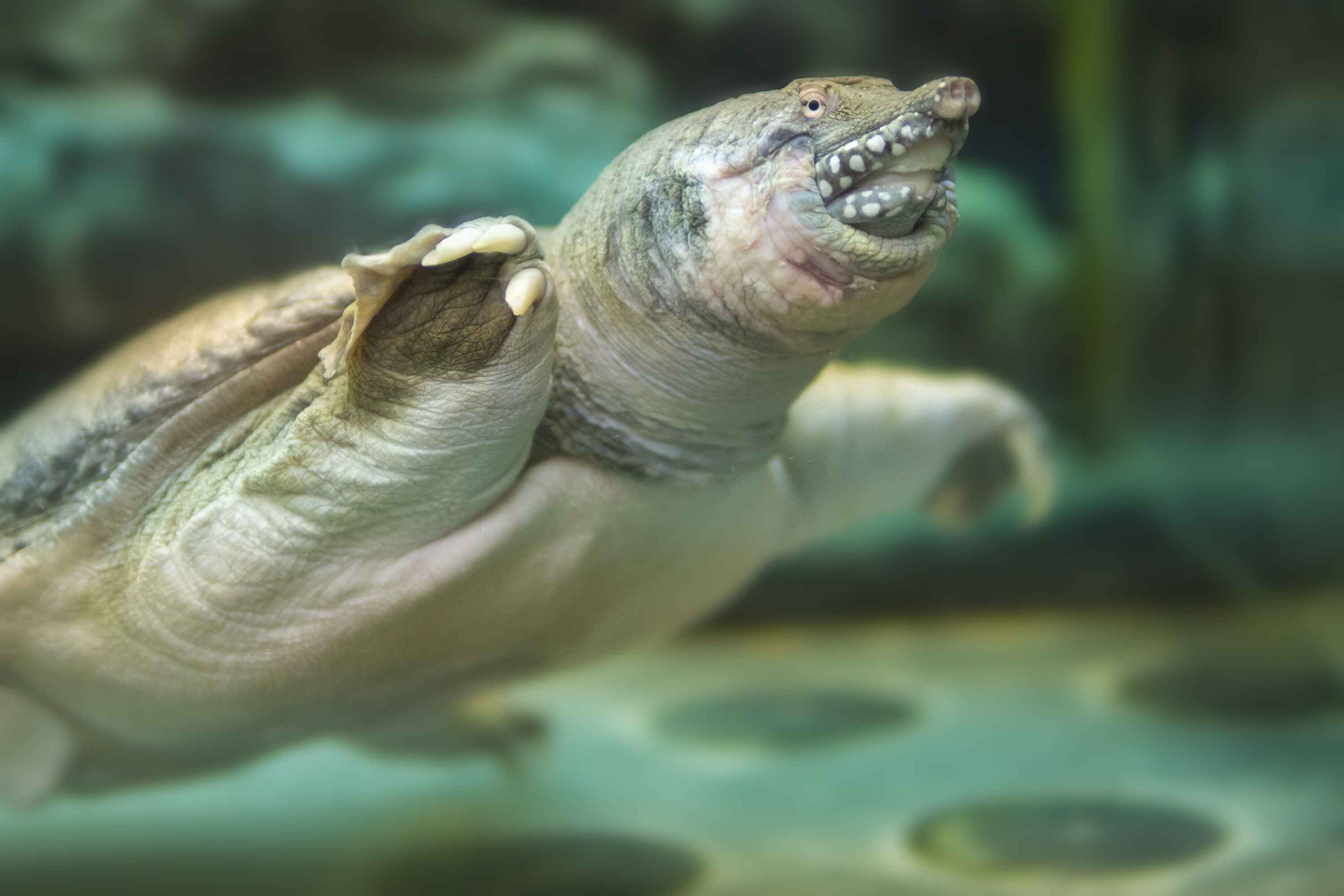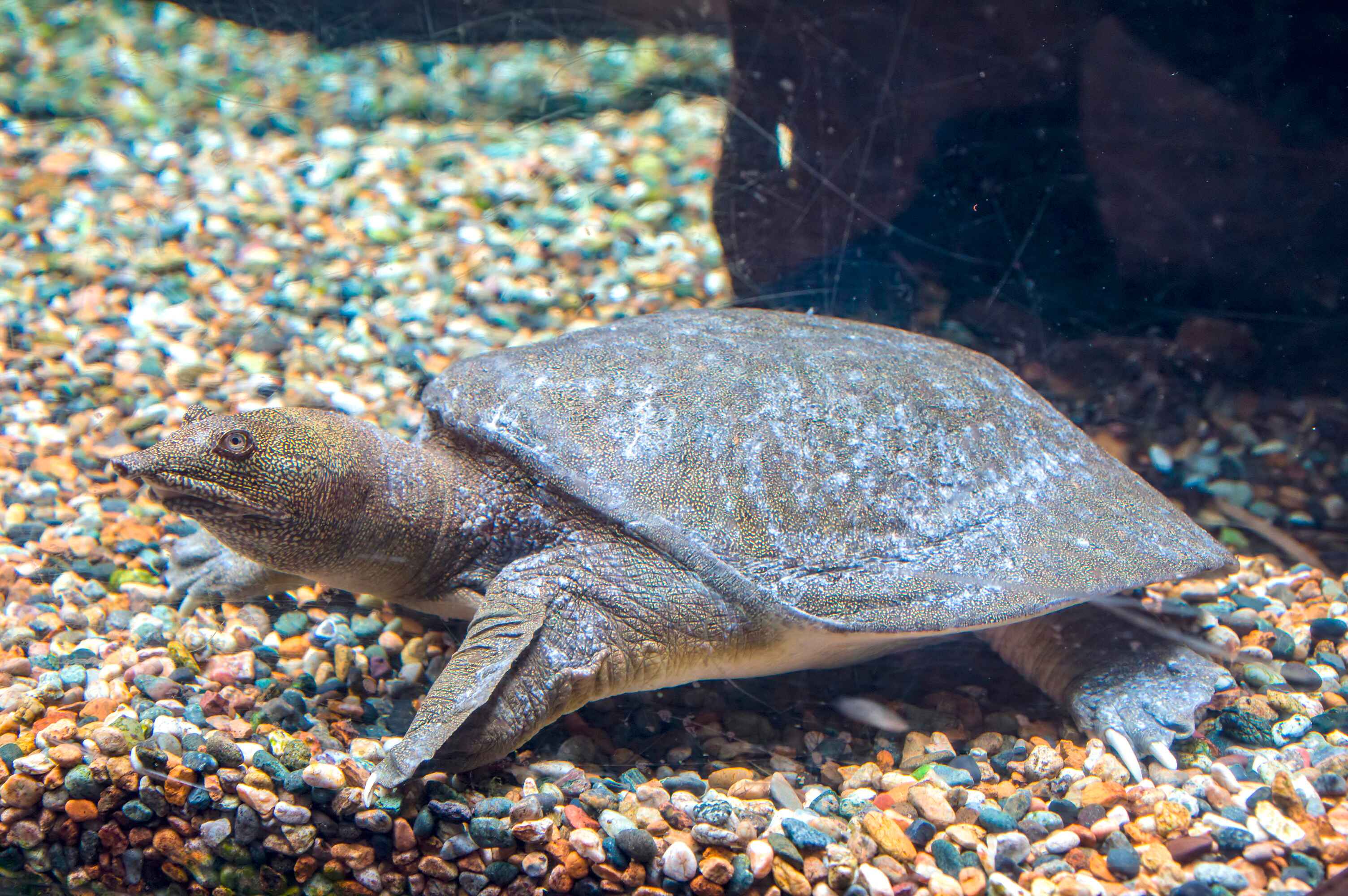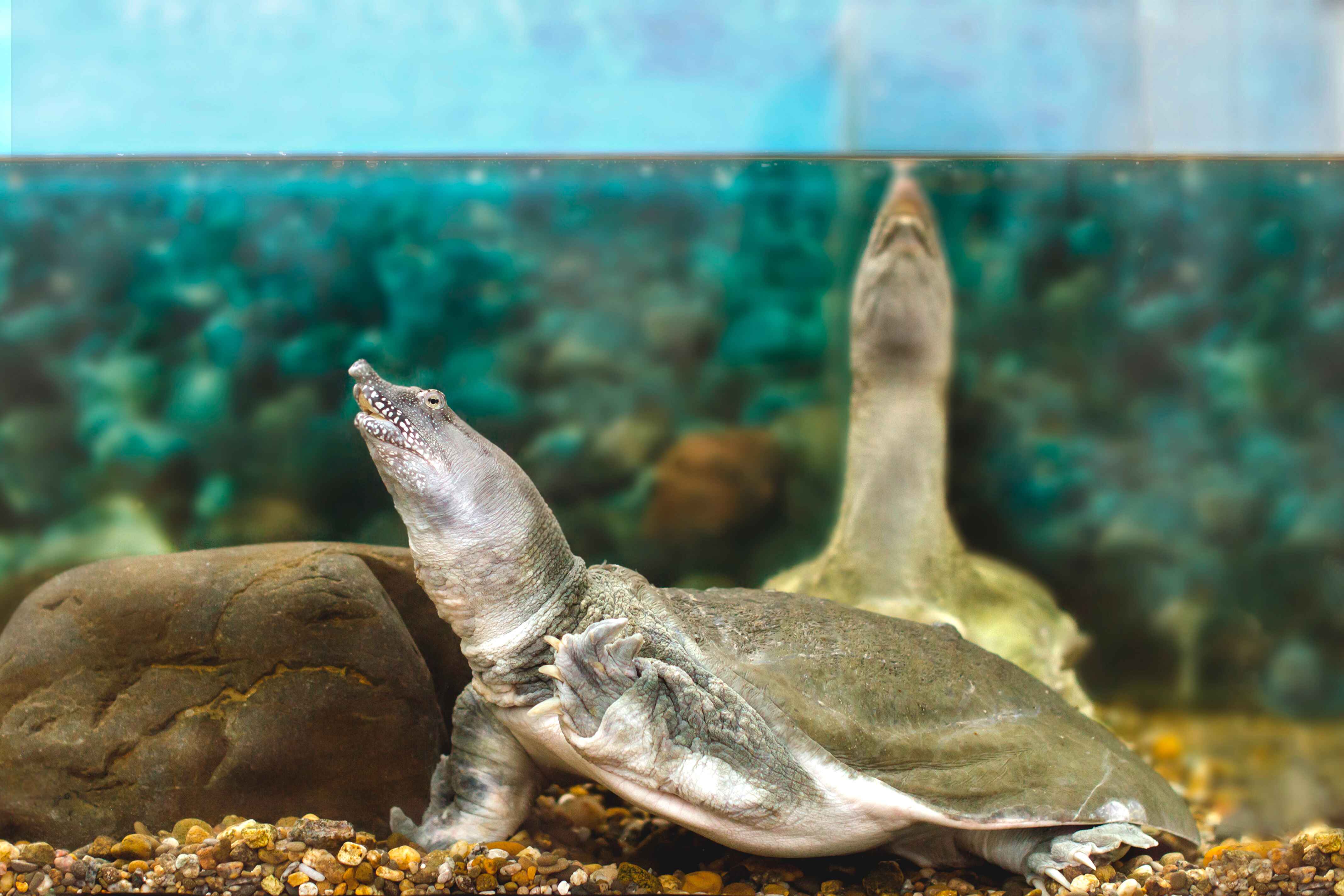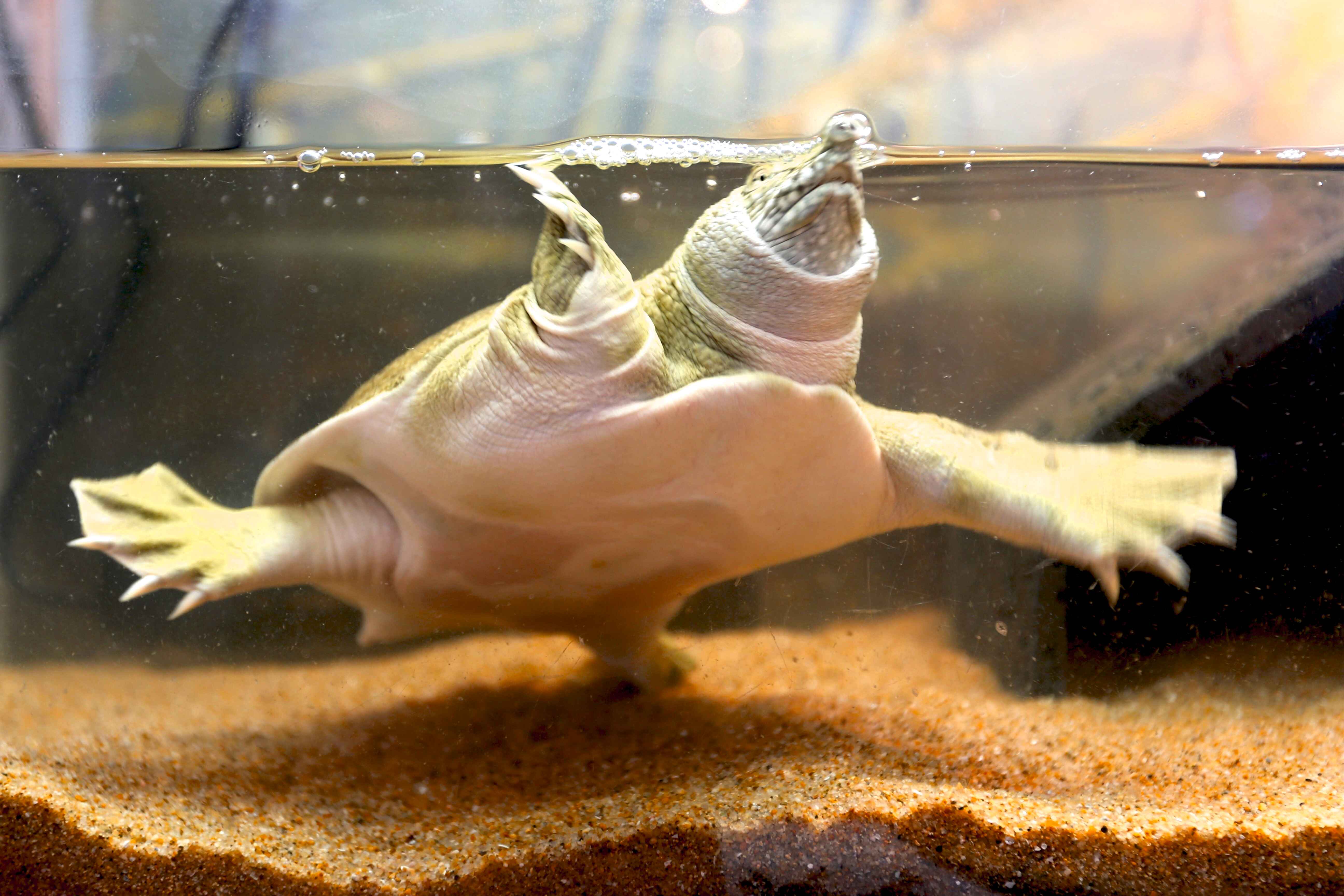Softshell Turtle

Unique and Exotic
Like the name suggests, softshell turtles are one of the most unique creatures in the world of turtles thanks to their lack of a hard shell. They are an exotic and peculiar species of turtle that stands out in more ways than one, including their surprising speed on land.
Softshell turtles, in particular females, can grow fairly large. Up to 14 inches long for Apalone mutica and Apalone spinifera; over 2 feet long for Apalone ferox. While they prefer not to be handled due to their vulnerability, softshell turtles make great pets that will develop a bond with their owners through feeding and other daily interactions. Over time, you will build a meaningful connection and have a fascinating and entertaining companion for many years.
Native Habitat
Softshell turtles are native to Africa, Asia, and North America. Because of their softer protection, these strange and fascinating creatures are vulnerable in the wild to predators, wounds, and infections. As a result, softshell turtles often submerge themselves in mud to hide from threats and can be aggressive when approached.

Recommended Housing And Accessories
Housing a softshell turtle means having no sharp or potentially harmful objects in their tank. They prefer large tanks with very clean water, so water care products like Zilla Water Conditioner, Zilla Miracle Ball, and Zilla PURE can be important time savers in keeping their environment healthy. Overall water quality is crucial so a good filter should be utilized to keep your softshell turtle happy and healthy.
The size of your softshell turtle’s tank should be at least 75-100 gallons depending on the species. The Aqueon Standard Glass Terrarium is a great option that comes in multiple sizes and can be paired with the Zilla Screen Cover with Center Hinge for easy access to the tank.
Turtles need to bask in order to warm up and regulate their metabolism. Provide a basking area with driftwood or accessories like the Zilla Freestanding Floating Basking Platform or Zilla Basking Platform Ramp. Use thoroughly rinsed play or river sand as substrate to allow them to mimic their natural burrowing behaviors.

Temperature and Lighting
Maintain a temperature of 70-80˚F with a basking area at 90˚F. Use bulbs like the Zilla Incandescent Spot Bulbs or Zilla Mini Halogen Bulbs to create healthy heat and lighting. You can also use heat emitters like the Zilla Aquatic Reptile Heater to help with consistent overall water warmth.
UVA and UVB is a necessity for a healthy turtle. Indoor turtles require UVB lighting and supplemental heat lights for 10-12 hours a day. Make sure to provide access to UVA/UVB on basking platforms using any Zilla Fluorescent UVA/UVB bulb. Remember to replace bulbs every 6 months.
For more information on UV lighting, read Understanding UVA, UVB, and UVC Reptile Lighting.

Feeding and Diet
Softshell turtles primarily eat insects, amphibians, eggs, and fish. They should be fed once daily, allowing consumption in 15 minutes. Like most pet turtles, they will readily enjoy dehydrated shrimp treats such as Zilla River Shrimp and Turtle Chasers. They will also adapt to eating floating turtle pellets like Zilla Turtle Sticks. You can also feed your softshell turtle live crickets or try gut loading with Zilla Gut Load Cricket Drink for added nutrition.
Check the Zilla Feeding Guide for a list of appropriate food options.

![]()
Handling
Over time, you will build a special connection with your turtle during feeding and caring for them in your daily interactions, but be cautious and gentle when it comes to picking them up. Softshell turtles are delicate but capable of biting, so it’s best to enjoy watching and interacting with them in other ways rather than handling them.




